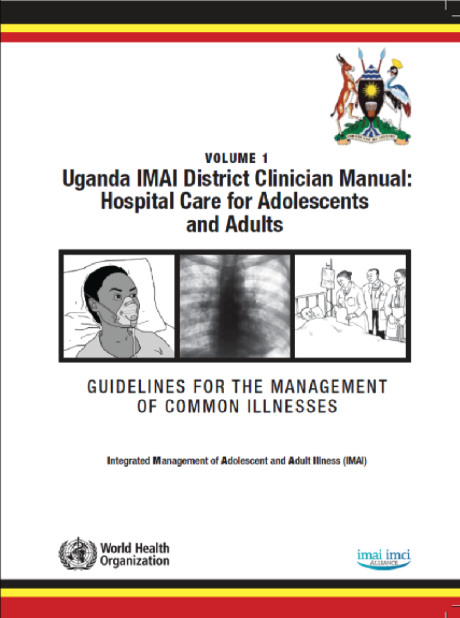WHO IMAI District Clinician Manual
The WHO IMAI District Clinician Manual (DCM) was initially developed in WHO starting in 2006 to support clinicians at district level to care for adult patients and deal effectively with the diverse clinical presentations and challenges of managing opportunistic infections in patients with advanced HIV infection and providing antiretroviral therapy as it became available at district level. The need to support the management of severely ill patients outside of an ICU with severe influenza and other epidemic-prone diseases presenting with severe respiratory distress and septic shock contributed to the completion of the DCM and the Quick Check+ training program. The DCM and these training tools were used to support case management in the influenza H1N1 pandemic in 2009, in the Ebola outbreaks in Uganda and West Africa (2014-2016), for pandemic preparedness in Nepal (2016-2019), and the SEARO SARI tools adapted and used to support case management of COVID-19 (2020-2021).
The manual became a comprehensive tool for the clinical management of most important communicable diseases with the collaboration of WHO departments responsible for neglected tropical diseases, tuberculosis, sexually transmitted infections etc, as well as other common clinical problems of non-pregnant adolescents and adults.
The manual emphasizes developing both skills in emergency care and ongoing management of severely ill patients through clinical reasoning, the development of a differential diagnosis, sending appropriate investigations, treatments and monitoring of patient response, as well as preparing clinicians to implement appropriate infection prevention and control precautions based on the suspected disease(s). The most updated version is the WHO SEARO IMAI District Clinician Manual (2021). The manual is most useful when is it has been at least regionally or country-adapted; adaptation also provides an opportunity to update sections based on new WHO evidence-based guidelines.
The DCM is based on multiple WHO evidence-based guidelines which have been simplified and operationalized for use by district clinicians in limited resource settings. Both the Pocket Book for Hospital Care for Children and the DCM provide practical guidance for daily work in hospitals without an ICU. Both assume limited essential medicines and laboratory testing as well as emphasis of management by generalist clinicians and senior clinical nurses, rather than specialist clinicians who may not be present at district hospital level.
The DCM was adapted in Uganda in 2014; in Nepal in 2018-2019; and was updated and adapted in the WHO Southeast Asian Region (SEARO) in 2020-2021.
The generic WHO IMAI District Clinician Manual was published in 2011 and has been used in many countries worldwide. In addition to its early use in HIV clinical training, the DCM forms the basis for several clinical training curricula and tools:
The WHO IMAI Quick Check+ and Clinician’s role in disease surveillance and response training program for the district hospital clinical team.
NCD training for the district hospital clinical team, who mentor and supervise the primary care NCD teams in the hospital outpatient and health centres as well as manage patients with treatment failure and complications who are referred to hospital. The acute care of common NCD emergencies such as diabetic ketoacidosis and severe hypertension are included in the manual. The Ugandan adaptation of the DCM developed specific sections to support hospital management of important chronic diseases including diabetes, hypertension, asthma/COPD, and sickle cell anemia.
The WHO Basic emergency care: approach to the acutely ill and injured, 2018 (BEC).



